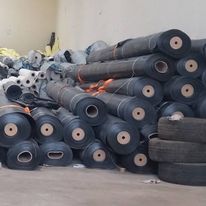Introduction
Water scarcity is a significant challenge in Kenya, particularly in arid and semi-arid regions. Small-scale water storage solutions, such as farm dams and water reservoirs, are gaining popularity as effective methods to mitigate this issue. A critical component in these systems is the use of dam liners, which help prevent water seepage, ensuring efficient water storage.
This blog explores the importance of small-scale water storage dam liners in Kenya, their benefits, types, costs, and installation. It also provides a detailed table of comparison, statistics, and practical tips for selecting the right dam liner for your needs. Whether you’re a farmer, NGO, or entrepreneur, this guide will help you make informed decisions.
Why Are Dam Liners Essential for Water Storage?
Dam liners play a crucial role in water retention, especially in areas with porous soils. Without them, stored water often seeps into the ground, leading to significant losses.
Key Benefits of Dam Liners
- Water Conservation: Prevents seepage, retaining more water for use.
- Cost-Effective: Reduces water loss, minimizing the need for frequent refills.
- Durability: High-quality liners can last over 10 years with proper maintenance.
- Environmental Protection: Prevents water contamination by blocking pollutants.
- Scalability: Ideal for both small-scale farmers and larger commercial projects.
Types of Dam Liners in Kenya
Choosing the right liner depends on factors like budget, soil type, and intended use. Here’s a comparison of popular types of dam liners:
| Type | Material | Thickness (mm) | Durability (years) | Cost (KES/m²) | Usage |
|---|---|---|---|---|---|
| HDPE (High-Density Polyethylene) | Polyethylene plastic | 0.5–2.0 | 15–20 | 200–500 | Long-term, large-scale dams |
| LDPE (Low-Density Polyethylene) | Polyethylene plastic | 0.3–1.0 | 5–10 | 150–400 | Small-scale farming |
| PVC (Polyvinyl Chloride) | Flexible plastic | 0.5–1.5 | 8–15 | 250–450 | Fish ponds, medium dams |
| EPDM (Ethylene Propylene Diene Monomer) | Synthetic rubber | 1.0–1.5 | 20+ | 400–700 | High-end, long-lasting use |
Statistics on Water Scarcity and Storage in Kenya
- Over 41% of Kenyans lack access to clean water (World Bank).
- 30% of rainfall in Kenya is wasted due to poor harvesting techniques (Kenya Water Alliance).
- Farmers using dam liners report 30–50% less water loss, increasing agricultural productivity.
Steps to Install a Dam Liner
- Site Preparation
- Select a suitable location with minimal slopes.
- Clear debris and ensure a smooth surface.
- Excavation
- Excavate the desired area, ensuring proper dimensions and depth.
- Compact the soil to avoid punctures.
- Liner Placement
- Unroll the liner carefully to avoid tears.
- Ensure the liner covers all sides and overlaps at the edges.
- Fixing and Finishing
- Secure the liner edges with weights or trenching.
- Fill the dam with water to stabilize the liner.
Cost of Installing Dam Liners in Kenya
The cost varies based on liner type, size, and thickness. Below is an estimated cost breakdown:
| Size (m³) | Liner Type | Cost Range (KES) | Labor Cost (KES) | Total (KES) |
|---|---|---|---|---|
| 50 | HDPE | 15,000–20,000 | 5,000–7,000 | 20,000–27,000 |
| 100 | LDPE | 25,000–30,000 | 8,000–10,000 | 33,000–40,000 |
| 500 | PVC | 100,000–120,000 | 30,000–40,000 | 130,000–160,000 |
Tips for Choosing the Right Dam Liner
- Assess Soil Type: Sandy soils may require thicker liners for durability.
- Consider Budget: While HDPE liners are durable, they might not be ideal for tight budgets.
- Climate Adaptation: Opt for UV-resistant liners for sunny regions.
- Supplier Reputation: Work with trusted suppliers for quality assurance.
Where to Buy Dam Liners in Kenya
- Top Suppliers:
- prime variable covers
- qua Link Solutions
Visit Website - EcoTank Supplies Kenya
Learn More
Success Stories
Farmers in Machakos County, who adopted HDPE liners, reported a 40% increase in crop yields, thanks to reliable water storage even during dry seasons.
Conclusion
Investing in small-scale water storage dam liners is a practical and sustainable solution for managing water scarcity in Kenya. With numerous options available, choosing the right liner can maximize your water storage capacity, reduce losses, and boost productivity. Whether you’re a farmer or a community leader, installing a dam liner is a step toward water security.
Need help selecting or installing a dam liner? Contact us today for expert advice and affordable options!
📧 Email: info@primevariablecovers.co.ke
Originally posted 2024-12-06 15:30:29.

